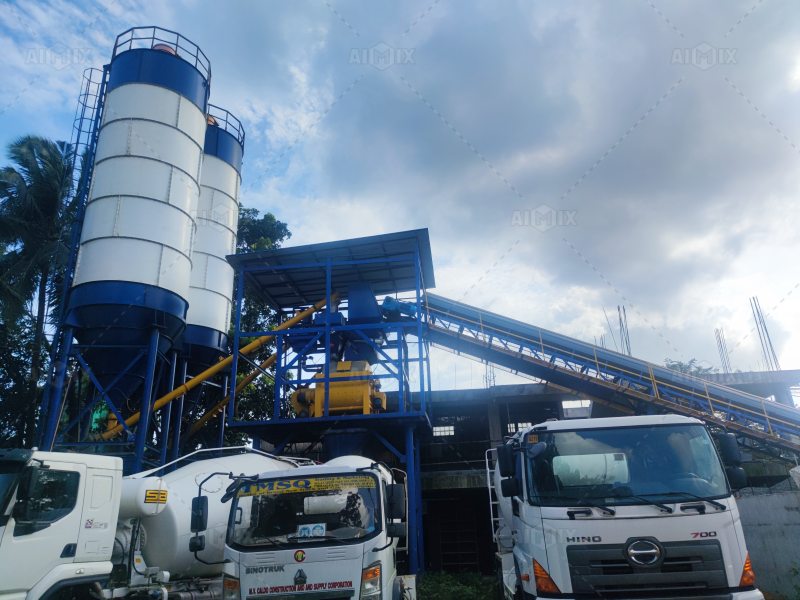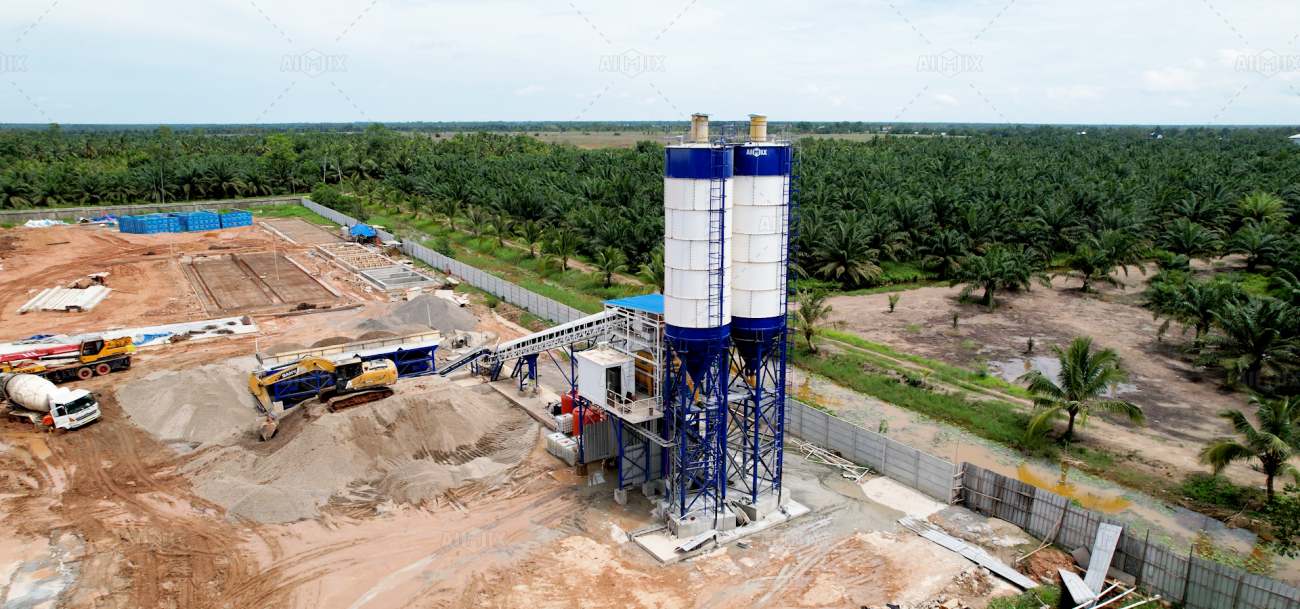As the global construction industry moves toward greener and more sustainable practices, eco-friendly technology has become a major driver in the evolution of concrete production. Concrete batching plants, in particular, are being redesigned and re-equipped with energy-saving systems, emission control mechanisms, and smart automation to meet environmental standards. However, these technological improvements come at a cost — raising questions about their impact on concrete batching plant prices.
In this article, we’ll explore how eco-friendly innovations are influencing the pricing of both mobile concrete plant price and stationary concrete batching plant price, and what role concrete batching plant suppliers play in shaping market trends.

1. The Push for Sustainable Concrete Production
Environmental concerns, rising fuel costs, and stricter government regulations are encouraging the construction sector to invest in cleaner equipment. Concrete batching plants, traditionally known for their heavy resource use and emissions, are now being transformed through innovations such as:
-
Energy-efficient motors and mixers
-
Dust collection and filtration systems
-
Recycled water and waste management technologies
-
Automated mix design to reduce cement overuse
-
Compatibility with supplementary cementitious materials (SCMs)
While these features reduce a plant’s carbon footprint and improve long-term efficiency, they also affect initial investment costs — especially in regions with strict green compliance standards like Europe or parts of Asia.
2. Impact on Stationary Concrete Batching Plant Price
A stationary concrete batching plant is typically chosen for large-scale, long-term projects such as highway, bridge, or commercial construction. These plants often integrate more robust eco-friendly systems compared to their mobile counterparts due to higher production volumes and stricter environmental scrutiny.
Key green technologies influencing stationary concrete batching plant price include:
-
Closed-loop water recycling systems that reduce freshwater consumption
-
Fully enclosed aggregate storage and conveyor belts to control dust emissions
-
High-efficiency twin-shaft mixers that shorten mixing cycles and reduce energy use
-
Automated control systems for real-time monitoring and batching precision
These upgrades may increase upfront costs by 10% to 30%, depending on the complexity of the system. However, the payback period is often short due to reduced utility bills, lower material waste, and fewer environmental fines or restrictions.

3. Impact on Mobile Concrete Plant Price
Mobile concrete batching plants are designed for flexibility and rapid relocation, making them ideal for roadwork, temporary infrastructure, and remote construction sites. While mobility used to come at the expense of eco-features, new-generation mobile plants now integrate many sustainable technologies as well.
Eco-friendly factors influencing mobile concrete plant price include:
-
Trailer-mounted solar-powered control rooms
-
Compact waste water recovery systems
-
Low-emission diesel generators compliant with Stage V/Euro 6 standards
-
Smart dosing systems that optimize SCM and recycled aggregate usage
Due to the challenge of fitting green systems into a compact and mobile setup, these plants may cost more per cubic meter of output than stationary models. That said, for companies operating in environmentally sensitive or regulated zones, the benefits of compliance and mobility often outweigh the added investment.
4. Role of Concrete Batching Plant Suppliers
Concrete batching plant suppliers play a critical role in how eco-friendly features influence pricing. Leading manufacturers are now:
-
Offering modular plant designs, allowing buyers to choose the eco-friendly upgrades they need
-
Providing lifecycle cost analyses to justify green investments through long-term savings
-
Designing region-specific models to meet local environmental laws and fuel standards
-
Bundling training and maintenance services to ensure maximum efficiency and compliance
Reliable suppliers also help clients secure certifications (such as CE marking or ISO 14001) that can unlock government incentives or green financing—further offsetting initial plant costs.
When evaluating suppliers, buyers should look beyond just concrete batching plant prices and consider the added value of environmental consulting, after-sales support, and flexible configuration.

5. Cost-Benefit Analysis of Eco-Friendly Upgrades
Although eco-friendly plants often come with a higher purchase price, they offer several financial and operational benefits that justify the investment, such as:
-
Reduced energy bills through optimized mixing and material handling
-
Lower material costs due to more accurate mix proportions and use of SCMs
-
Fewer regulatory penalties and easier permitting processes in green zones
-
Improved brand reputation, especially for contractors targeting LEED or BREEAM-certified projects
Additionally, buyers often find that the price difference between standard and eco-upgraded concrete batching plants for sale is shrinking as technologies become more mainstream and competition among suppliers increases.
6. Regional Trends and Future Outlook
Regions like Europe, the Middle East, and Southeast Asia are pushing for more sustainable infrastructure, which is directly influencing plant design and pricing. In many countries, subsidies or tax incentives are now available for green construction equipment, easing the financial burden for buyers.
As digital technologies such as AI-based mix optimization and remote diagnostics become standard, the concrete batching plant price will increasingly reflect the integration of intelligent eco-solutions rather than just capacity or mobility.
Conclusion
Eco-friendly technology is undeniably influencing concrete batching plant prices, but not in a way that should deter buyers. Whether you’re evaluating a mobile concrete plant price, comparing a stationary concrete batching plant price, or sourcing reliable concrete batching plant suppliers, investing in green features is no longer optional—it’s a necessity for long-term compliance, efficiency, and competitiveness.
Buyers who approach these decisions strategically—focusing on lifecycle value, environmental impact, and supplier support—will be better positioned to thrive in a market where sustainability and profitability go hand in hand.
